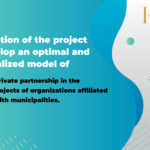In today’s competitive world, in order to acquire talent, organizations need to look beyond simple labor replacement. For this reason, some experts believe that if organizations do not have written strategic plans for it, especially in key jobs, they will face many problems. Succession training means creating a reservoir for identifying effective people in the organization and nurturing them to hold strategic (vital and key) jobs in the organization.
What is surrogacy?
Succession is a smart talent management strategy that can keep talent within the organization and ensure the organization has the skills needed to respond to the rapid changes that today’s business environment creates. In other words, it is ensuring that the organization systematically identifies and prepares high-potential candidates for key positions. The purpose of succession planning is to identify and develop people to replace current managers in key positions in cases of resignation, retirement, promotion, growth, expansion and creation of new positions. As mentioned, succession is basically for the strategic jobs of the organization. In these jobs, the best employees should be identified in order to be employed in the best key positions of the organization.
The necessity of succession in the organization
Succession is done for the organization’s strategic jobs, and critical and key jobs usually include 20% of the organization’s jobs. Although organizations need human capital for growth and survival to face the challenges of environmental changes, the lack of talented manpower in the labor market has become a serious threat to organizations. In such a situation, the need and importance of succession in the organization becomes more and more. One of the necessities of the system is succession in organizations to empower managers and employees to implement the lean production system.
Succession needs in the organization
- It helps to implement the strategic business plans of the organization.
- It creates many opportunities for high performers.
- Identification of alternative needs as a tool that identifies training and development needs of employees.
- It encourages the advancement of different groups such as women and minorities in the future jobs of the organization.
- It helps to plan the career path of people in the organization.
- It increases people’s ability to face the changing environment.
- Increasing the power of the organization in cases such as voluntary departure of people such as early retirement or redemption.
Technical problems
Creating change and appropriately dealing with possible resistance to changes resulting from this process, determining the appropriate starting point for managing succession changes and identifying challenges in the organization, overcoming resistance to change by explaining its benefits or the organization’s need for it, convincing senior managers and Organizational policy makers/organizational structure/work processes/organizational culture/alignment of succession plans with strategic plans of human resources and the whole organization. Skill in analyzing the risk of key people and sensitive job positions that determines which parts of the organization have a higher risk of losing key people. have
The most important stages of talent management and succession in the organization
The first step: determining the policy
At this stage, organizations review the existing models and previous procedures in the succession management system in the background or research or similar organizations and determine policies for implementing the system. Policy defines the boundaries within which future decisions must be made. For the succession management system in the policy setting stage, the commitment of managers and the identification of key positions are important.
Second stage: evaluation of candidates
After the key positions are identified, a job description is created for each job that outlines the duties and responsibilities of each job. Then, according to the specified job description sample to evaluate candidates suitable for these jobs, two steps are suggested for succession:
- Identifying the competencies required for key positions
- Identifying talented people
The third stage: development of candidates
When the organization identifies the competencies needed to meet the future needs of the organization, it has to evaluate the existing situation of the organization. Are these competencies also present in the current situation? What are the gaps between the status quo and what is identified for the future? After the talented people are identified, they enter the talent fund and are identified according to the conditions of job qualification. In the following, the developmental gap and training programs needed to prepare talented individuals to take up key jobs are identified.
The fourth step: evaluation of the succession management plan
Despite the many options that emphasize the importance of succession planning and management, the reason for the decrease in the planning of this process in organizations is that human resources fail to show the value of planning and managing it to the organization.
The principles and rules of succession management
The management of this process requires a system based on developing and flexible activities. The purpose of this principle is to determine and prepare successor candidates, which is done with the help of on-the-job training methods and techniques including delegation of authority for key and targeted jobs. In the process of fostering succession, one should avoid any ambiguity and act in a clear and unambiguous system. In such systems, all employees are aware of the principles and rules, and the organization enjoys the benefits of the transparency of the principles and belief in the disclosure of goals and plans. The formation of evaluation and development centers is one of the necessities of an organization in this process. In this process, senior managers must be able to identify critical target jobs and differentiate them from other job positions so that they can focus their strategies on the target job positions.
In the succession process, it is necessary to determine the organization’s short-term and long-term priorities so that you can provide better solutions. Measuring the progress of employees on a continuous basis, as well as providing appropriate feedback to the progress of employees, helps to gradually eliminate the shortcomings and defects of the system.
You should note that at any stage of this process, if you forget the culture, values and strategies of the organization, your planning will not be effective. In fact, this culture, organizational values and future strategies should determine the direction of your succession strategy.
Facilitating factors of succession
Systemic approach
Peter Senge (1999) considers systems thinking as a framework that emphasizes understanding the relationships between components and processes instead of identifying them. Holistic perspective along with understanding the relationships and patterns of change and transformation causes the integration of the whole system. By adopting a systemic approach, succession planning integrates its components and processes. This integration establishes order and continuity and improves the effectiveness of succession.
Organizational culture
The learning capacity of an organization depends on its organizational culture. Succession fosters the belief in employees that people are promoted through the process of continuous learning and improvement, and by spending a lot of time and energy. Such a belief promotes the culture of meritocracy and merit selection in the organization, and through that culture of organizational learning also expands. This rich and healthy culture facilitates the process of implementing succession.
Support and participation of senior managers
The participation and support of senior managers is essential for the formation of organizational transformation. Managers support succession candidates by sharing their knowledge and experiences. Knowledge management is an effective solution to promote the culture of sharing, transferring and distributing knowledge in the organization. Unlimited access to information and knowledge for everyone facilitates the succession process.
Enthusiasm and motivation of employees
Succession training requires the active participation of employees in the process of learning and improvement, but participation does not take place without increasing organizational motivation and enthusiasm. The organization’s commitment to the growth and cultivation of talents within the organization creates motivation for growth in employees. Motivated employees engage, learn, grow and prepare for leadership roles faster and better.
Developing and implementing individual development plans (IDP)
Management and cultivation of talents requires planning for the development of human resources of the organization. The evaluation and development center is one of the effective tools and solutions for formulating an individual and organizational development plan. During the evaluation center process, the strengths and weaknesses of people are evaluated based on the competencies required by the organization. Then, in the development center, an individual and organizational development plan is formulated based on the results of the evaluation center. The implementation of this program with the aim of continuous learning and improvement can provide the necessary platform for the succession process.

Organizational coaching
Coaching is one of the essential requirements and infrastructures to facilitate the succession process. Creating equal opportunities with the goal of universal growth, developing competencies and improving the quality of people’s performance in order to achieve a better position requires concentration and continuity. Organizational coaching is an effective mechanism to strengthen individual and group commitment and responsibility. Coaching can solve learning and growth challenges and prepare people for future roles in the organization.
Limiting and inhibiting factors
In order to establish and develop the succession system, organizations and companies must create the necessary infrastructure to weaken and remove the inhibiting and limiting factors. If the organizations cannot deal with these factors, the facilitating factors will gradually be limited and weakened. It is important to note that the absence of any facilitating factor is equal to the emergence of an inhibiting factor. Therefore, the management of facilitating and inhibiting factors is essential for the establishment and development of the surrogacy system.
Lack of organizational security
Lack of honesty, mistrust, jealousy, limiting access to information and lack of cooperation among employees are the results of lack of security in the organization. In such a situation, the succession system will not be established, and if it is established, it will never be developed.
centralized structure
Bureaucracy, hierarchy, pyramidal and centralized structure in the organization creates mechanisms that are contrary to the approach of empowerment and talent development. Succession process requires flat structures, decentralization, delegation and trust.
Emphasis on early benefits
Succession in organizations and companies is a continuous and long-term process that will be accompanied by spending money. Emphasis on early benefits and quick returns contradicts the processual nature of succession. Any kind of process requires determination, continuity and evaluation. A quick and self-interested attitude will not be willing to spend time and money to solve the challenges and solve the problems of the succession process.
conclusion
Succession is a systematic approach and a structured process that will not be effective without the implementation of techniques and sufficient knowledge. In fact, this process is considered a very effective method for providing talented and efficient human resources for organizations. The plan to implement the succession system as part of a talent management strategy will enable the organization to know the current and future needs, as a result of aligning and developing the talent based on it. However, to succeed in this process, organizations must also focus on employee career development. Increasing the pool of talents from upgradable employees and providing job opportunities for talented people in management ranks are other goals of succession planning.












